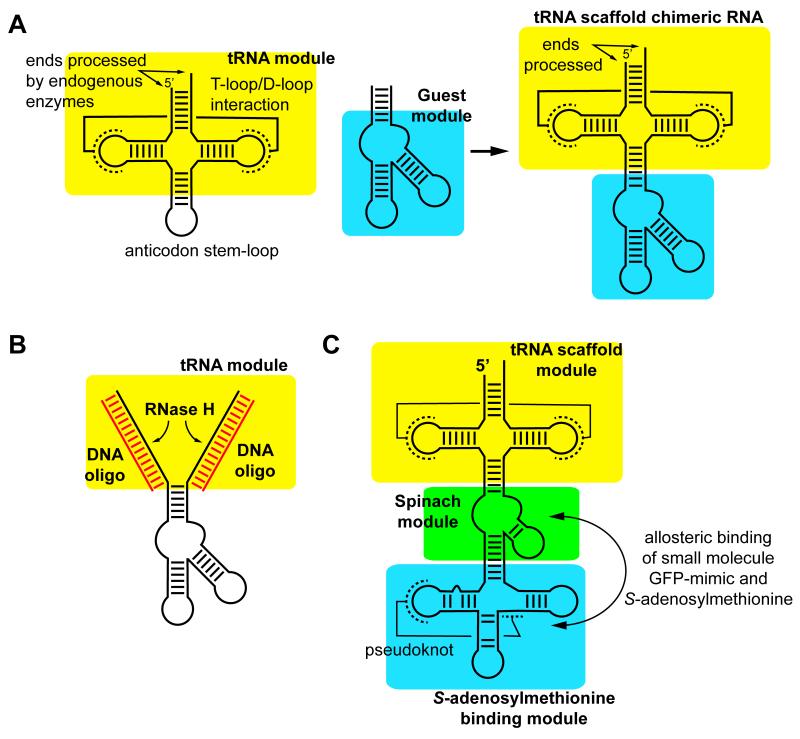Figure 1.
The tRNA scaffold for in vivo expression of RNA. (A) The structured core of tRNA (yellow) is used as a host for an RNA of interest (cyan) which are fused together through replacement of the tRNA anticodon stem-loop to create the chimera. (B) Removal of the scaffold from the RNA of interest can be achieved by DNA oligonucleotides hybridizing to both sides of the tRNA and cleaving the duplex with RNase H. (C) More complex chimeras can be created that incorporate multiple modules to create an in vivo sensor of small molecule metabolites such as S-adenosylmethionine.

